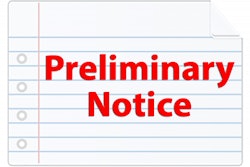
Imagine the following scenario: The entire construction industry is given an ultimatum — every stakeholder in the industry, from the largest GC down to the smallest mom-and-pop specialty contractor, has to work together in order to achieve these two mandates:
- Construction worker on-the-job deaths must be reduced by 66%
- Construction worker injuries and illnesses must be reduced by 75%
You’d probably say, “that’s impossible!” After all, how could an industry as massive and as fragmented as construction possibly come together to achieve such extraordinary goals.
Collaboration worked for safety — why not for payments?
Well guess what — these remarkable achievements already happened. Starting around the 1970s, industry stakeholders got together to collaborate on worker safety. As a result, worker deaths are down from about 38 per day in the 1970s to 14 per day in 2016, and worker injuries and illnesses are down from 10.9 incidents per 100 workers in 1972, to 2.9 per 100 in 2016 [source: https://www.osha.gov/oshstats/commonstats.html].
In short, the industry’s collaboration to improve worker safety worked. The incredible improvements in worker safety show what’s possible when an entire industry is motivated to make changes. Construction is still dangerous work to be sure, but it’s a lot safer today than it was 40 to 50 years ago.
And that got us thinking: if the industry was able to collaborate to improve worker safety, why can’t the industry come together again, this time to collaborate on the broken system of payments?
Over the same time period construction’s broken system of payments has only gotten worse. Not only does it take longer to get paid in construction than in just about every other industry, recent data suggests that this waiting period is getting longer with each passing year.
Getting paid: plagued by fear, stress, and bad outcomes
On many projects, the stakeholders involved stress about what may go wrong. They worry about the paperwork; they worry about mechanics liens; they worry about how long it will take to get paid, or even if they’ll get paid at all.
All of this stress turns the project stakeholders into adversaries. Instead of working together, each party on the project squares off against one another, trying to protect themselves by out-leveraging their project partners in a zero-sum game. And it’s not working.
What the industry needs: a new mindset to complement existing tools
In his recently published payment manifesto, “lienzero,” zlien CEO Scott Wolfe proposes that the best way to fix payments forever is project stakeholders to start using the SET methodology. “SET” is an acronym that stands for:
- See everyone on the job to reduce fear
- Easy paperwork to reduce friction
- Talk it out to put out fires
Let’s unpack how using SET can help fix construction payments.
How to “See” everyone
The preliminary notice is an example of one of those existing tools that’s been available to the industry for quite some time. Originally invented for the benefit of upper-tier parties (such as project owners and GCs), preliminary notices were designed to let owners and GCs know who was working on their projects. Despite the good intentions, at some point over the last few decades, sending preliminary notice came to be viewed as an adversarial act rather than as the helpful one as originally intended.
Why Subcontractors Should Always Send Preliminary Notices
The point-of-view has resulted in project stakeholders being reluctant to send preliminary notices on their projects for fear of angering their project partners. This is unfortunate since sending preliminary notice is one of the best ways for lower-tier project stakeholders (such as subs and suppliers) to make sure that they are “seen” by everyone on the project. To fix this, everyone on a project needs to change their view of preliminary notices and recognize them for the helpful documents that they really are.
How to make paperwork “Easy”
The great partner of the preliminary notice in construction payments is the lien waiver, another tool that’s been around for quite some time. However, the story with waivers isn’t much better than with notices. People in the industry (but especially GCs) get really stressed out about lien waivers, and with good reason: not only are waivers confusing, there’s also a ton of misinformation out there regarding how to exchange waivers properly.
What Do You Need to Know About Construction Lien Waivers?
3 Dangers of Lien Waivers for Subcontractors
For example, did you know that waivers need to be notarized in only three states (Texas, Mississippi and Wyoming )? For the vast majority of states, notarizing waivers is just a waste of time. Further confusion exists over which type of waiver should be used, and who to collect waivers from. One of the best ways to the waiver exchange process easier is by leveraging technology.
5 Tips for Requesting, Collecting and Tracking Lien Waivers
How to “Talk” it out
It’s easy to say that you’re in favor of proactive communication, but actually communicating effectively in real life is hard. There’s a huge difference between simply saying something and really communicating, a phenomenon that is perfectly captured by this George Bernard Shaw quote: “The single-biggest problem in communication is the illusion that it has taken place.”
Communication is not just an activity. It’s a result. The goal of communication shouldn't be winning or out-leveraging your project partner into the ground. The goal should be collaboration and figuring out a way to have good outcomes that work for everyone.
Combining the SET methodology with the active, consistent use of tools like preliminary notices and lien waivers will go a long way towards fixing the construction industry’s broken system of payments. If the industry is able to collaborate to make this change, stakeholders can expect to see faster, fairer payments, fewer mechanics lien filings, and better outcomes all around.
Peter Menge is zlien's Content Manager. He works to create useful content that makes the mechanics lien and construction payment process simple, easy, and fair for everyone in the construction industry.


















